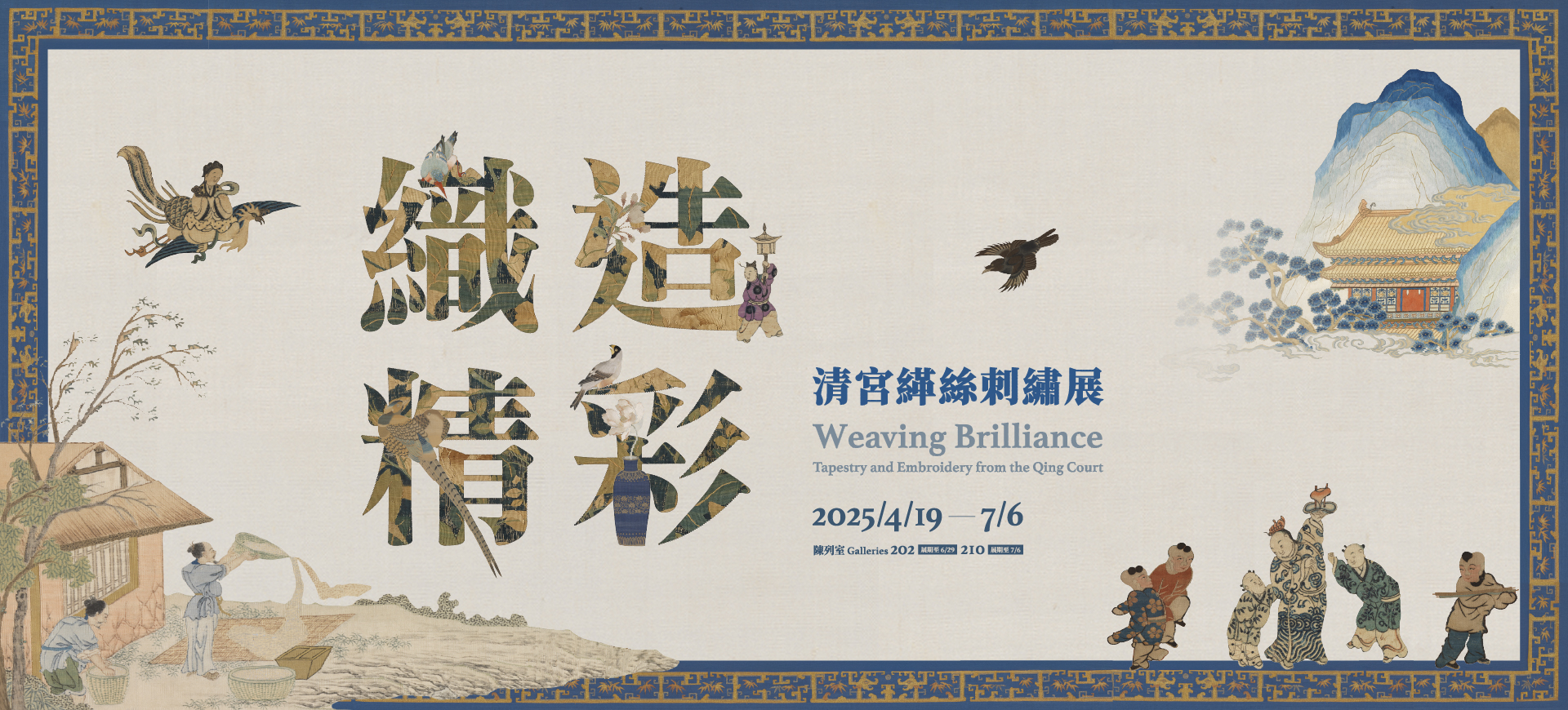Ancient Works of Kesi and Embroidery in the Qing Court Collections
-
Kesi Wealth and Eternal Youth
Anonymous, Song dynasty
Hanging scroll
Gu Si 000018This piece of kesi from the Qing imperial court collection is a rare surviving masterpiece from the Song dynasty. Woven with blue silk threads as the background, the central motif is a peony that is accompanied by rose periwinkles, chrysanthemums, and cotton rose hibiscus, together forming an auspicious composition known as “wealth and eternal youth.” The flower stamens are intricately rendered, the branches and leaves are interwoven, and the colors are bright and vivid, showcasing superb and refined tapestry craftsmanship.
During the Song dynasty, kesi pieces like this one were not only for aesthetic appreciation but also cut and used for mounting paintings and calligraphy. A concrete example is found in the Liaoning Provincial Museum, where a kesi piece is used in the mounting of “Divine Steed” by Han Gan from the Tang dynasty. -
Kesi Flowers-and-Birds of the New Year
Anonymous, Song dynasty (attributed)
Hanging scroll
Gu Si 000014This particular work is recorded in the Shiqu Baoji, Third Compilation under the title “Kesi Flowers-and-Birds of the New Year” (《宋緙絲歲朝花鳥》), though its stylistic features indicate that it is actually a Ming dynasty kesi. The woven scene features blossoming plum blossoms and camellias. Two crested mynas appear—one perched on a plum branch and the other flying mid-air, singing to one another. By the lake are planted bamboo, rocks, and narcissus flowers, and a pair of common pheasants nestle together on the stone. Some areas, such as the double-outlined plum branches, petal contours, and feather details of the pheasants, are enhanced with painted brushwork. The combination of plum blossoms, camellias, narcissus flowers, and geraniums represents festive springtime flora, and the paired birds add to the joyful New Year atmosphere.
The kesi technique was heavily influenced by paintings and often replicated famous artists’ works. This textile, along with another exhibit “Birds and Flowers” (inventory no. 中絲000006), uses a similar composition and is based on the style of Ming dynasty court painter Lü Ji (ca. 1439–ca. 1504).


